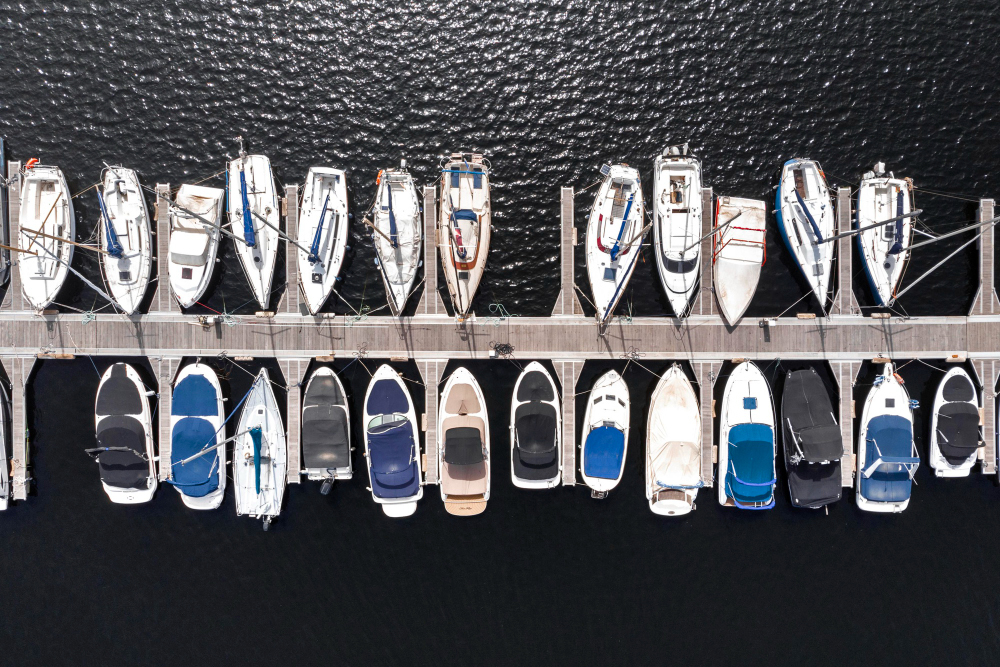Indoor vs Outdoor Boat Storage for Offshore Performance Boats

For those who own offshore performance boats, choosing the right storage solution is crucial to maintaining your vessel's condition and preserving its value. Whether you're a weekend racer or a leisure cruiser, understanding the benefits and drawbacks of indoor versus outdoor boat storage can help you make the best decision for your needs. In this post, we'll explore key factors to consider when deciding between indoor and outdoor storage options for your offshore performance boat.
The Importance of Proper Storage
Offshore performance boats are an investment. With their high-speed capabilities and sleek designs, these boats require careful maintenance and storage to ensure they remain in top condition. Improper storage can lead to wear and tear, affecting your boat's performance and longevity. Additionally, choosing the wrong storage method can expose your boat to environmental hazards, leading to costly repairs and depreciation.
Indoor Boat Storage
Indoor boat storage offers several advantages for those looking to protect their investment. Let's take a closer look at the benefits and potential downsides of this option.
Benefits of Indoor Storage
- Protection from the Elements
Indoor storage shelters your boat from harsh weather conditions, such as rain, snow, UV rays, and extreme temperatures. This protection helps prevent damage to the boat's exterior and interior components, reducing the likelihood of needing repairs.
- Enhanced Security
Indoor storage facilities often offer additional security measures, such as surveillance cameras, gated access, and alarms. This added protection can help deter theft and vandalism, giving you peace of mind when your boat is not in use.
- Controlled Environment
Storing your boat indoors provides a controlled environment, reducing the risk of mold, mildew, and other moisture-related issues. A climate-controlled facility can also help maintain the boat's mechanical systems and prevent corrosion.
- Convenience and Accessibility
Indoor storage facilities typically offer convenient access to your boat, allowing you to perform maintenance and inspections whenever needed. Many facilities also provide additional services, such as detailing and winterization.
Drawbacks of Indoor Storage
- Higher Cost
Indoor storage is often more expensive than outdoor options due to the added protection and amenities. However, the cost may be justified by the long-term benefits and reduced maintenance expenses.
- Limited Availability
Indoor storage facilities may have limited availability, particularly in peak seasons. It's essential to secure a spot in advance to ensure you have a place for your boat when needed.
Outdoor Boat Storage
Outdoor boat storage can be a more affordable option for those with budget constraints. Here are the benefits and potential drawbacks of outdoor storage for offshore performance boats.
Benefits of Outdoor Storage
- Cost-Effective
Outdoor storage is generally more affordable than indoor options, making it an attractive choice for those looking to save money.
- Availability
Outdoor storage options are often more plentiful, providing flexibility when it comes to location and access.
- Quick Access
Storing your boat outdoors allows for quick and easy access, making it convenient for spontaneous outings or last-minute maintenance.
Drawbacks of Outdoor Storage
- Exposure to the Elements
Outdoor storage exposes your boat to weather conditions, which can lead to damage and deterioration over time. Protecting your boat with a cover can help mitigate some risks but may not provide complete protection.
- Security Concerns
Outdoor storage may not offer the same level of security as indoor facilities, increasing the risk of theft and vandalism. Investing in additional security measures, such as locks and alarms, can help protect your boat.
- Limited Climate Control
Without climate control, your boat may be vulnerable to moisture-related issues, such as mold and mildew. Regular maintenance and inspections are crucial to prevent damage.
Factors to Consider When Choosing a Storage Option
When deciding between indoor and outdoor storage for your offshore performance boat, consider the following factors:
- Budget
Determine your budget and evaluate the costs associated with each storage option. While indoor storage may be more expensive, the added protection and convenience may outweigh the higher price.
- Location
Consider the proximity of storage facilities to your home or preferred boating area. A convenient location can save you time and effort when accessing your boat.
- Security
Assess the security measures at each facility and weigh the importance of added protection for your peace of mind.
- Climate
Evaluate the climate in your area and how it may affect your boat. If you live in an area with harsh weather conditions, indoor storage may provide better protection.
- Usage Frequency
Consider how often you plan to use your boat and the convenience of accessing it from each storage option. Frequent boaters may prefer outdoor storage for its quick access, while occasional users may benefit from the protection of indoor facilities.
Conclusion
Ultimately, the decision between indoor and outdoor boat storage depends on your specific needs, preferences, and budget. By considering the benefits and drawbacks of each option, you can make an informed decision that best protects your offshore performance boat and prolongs its life.
For more information on storage options and maintaining your offshore performance boats, contact Velocity Powerboats today. Our team of experts can guide you in selecting the ideal storage solution and help you get the most out of your boating experience.